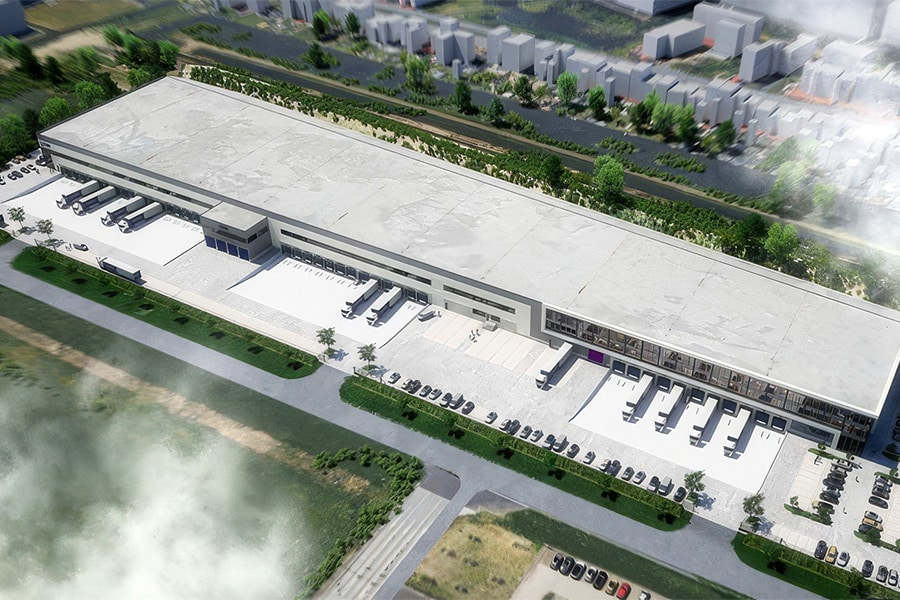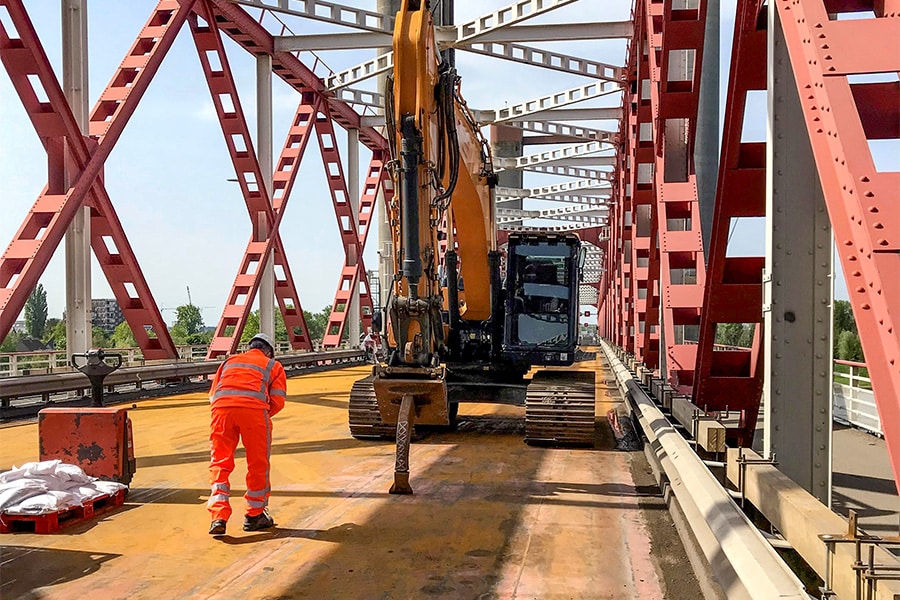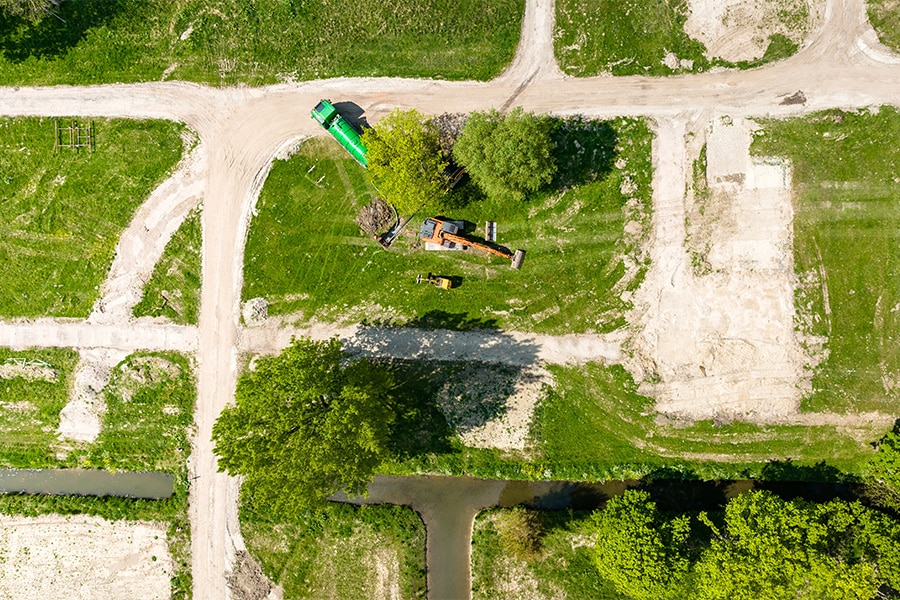
Monnickendam pumping station: masterpiece below ground level
To protect the polders north of Amsterdam from the changing climate, a new pumping station is being built in the Nieuwendam near Monnickendam. Monnickendam pumping station will soon contribute to maintaining the level of the Schermerboezem. For the construction of the pumping station, largely below ground level and under the busy N247, the Hoogheemraadschap Hollands Noorderkwartier is relying on the proven expertise of contractor combination Van Hattum en Blankevoort and Friso Civiel.
Van Hattum en Blankevoort and Friso Civiel are forming an integral contractor combination on the project. "There is no demarcation between the two companies on this project," says Sander Lodder, site director at Van Hattum en Blankevoort Diemen site. "The employees involved from both employers operate as one team." Maarten Reijgersberg, project manager at Friso Civiel (part of Friso Bouwgroep), adds: "An outsider will not notice which employer an official is working for on the project. We combine our hydraulic engineering knowledge and profile ourselves as a combination pumping station Monnickendam."
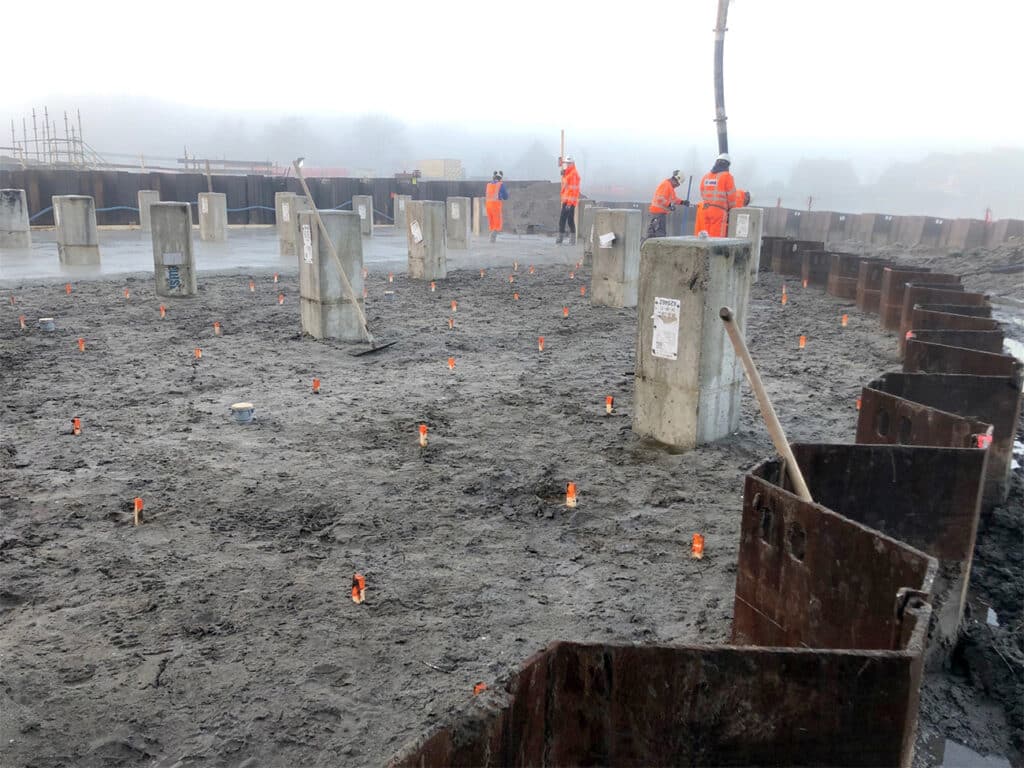
The same mindset
Both companies have many similarities, according to Reijgersberg. "The way of working, dealing with each other, it's all similar. A nice side effect of this is that the communication among themselves and to the outside world is also particularly smooth. Incidentally, we already know each other from previous projects. For example, we successfully built a number of pumping stations together on Texel between 2016 and 2019. It was reason for us to bid jointly, in combination, on this project." The construction of the new pumping station is contained in a UAV-gc contract. "There was a mindset indicated in terms of the specifications (three pumps and a fish passage) and the landscaping with a control building in the Nieuwendam, but the rest was left to the market. Based on the image quality plan, we further developed the design and applied for the environmental permit. So that part was also entirely with us as the contractor."
Primary water barrier
To proceed to realization, it was important that the nitrogen emissions remain within the principles of the so-called Aerius calculation, Reijgersberg knows. "By applying VolkerWessels' NoNOx filters and deploying electric and hybrid equipment, we can meet this." Lodder: "In terms of execution, it is work on a postage stamp. There is incredibly little space on the construction site, located on the edge of the dam and even partly in the water. In that sense, it is comparable to an inner-city assignment. Because the pumping station is being constructed in a primary flood barrier, all our auxiliary works must be tested for storm resistance. This means, for example, that temporary sheet pile walls are dyke-worthy and double-water-resistant. Water safety is top priority for the Water Board."
The right measures
Although the pumping station crosses the busy N247, the provincial road should not be affected by the work. Reijgersberg: "In just two weekend stoppages for car traffic, we have constructed an emergency bridge in the N247, so that we can construct the pumping stations under the carriageways without inconveniencing traffic. During the two stoppages, a bypass was provided for public transport and emergency services, while we ferried cyclists back and forth using a rented ferry." Says Lodder, "At times like these, our collaborative approach comes into its own in the best possible way where the requirements of all stakeholders are unified and translated into the right measures." During the two weekend stoppages, the contractor combination also realized the first part of the construction pit under the road. This included installing temporary sheet pile walls, foundation piles and the first outrigger frame, not knowing at the time what was in store for them.
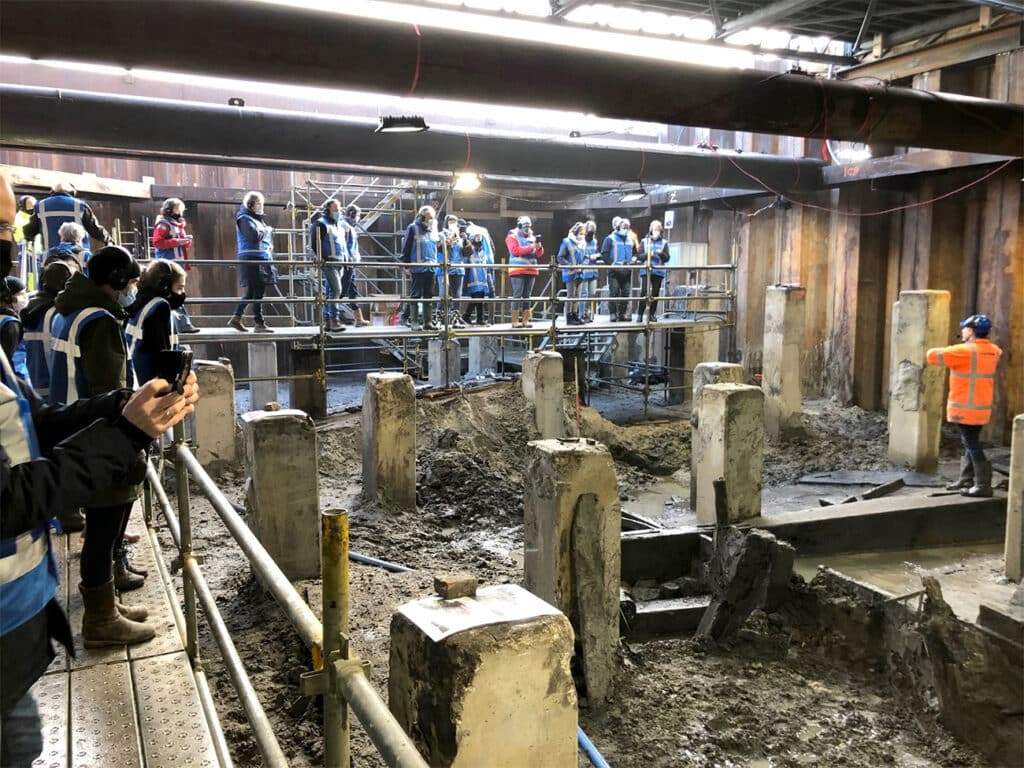
Old sea lock
"From the HHNK, we had a contractual obligation to carry out the excavation work with archaeological guidance," Reijgersberg continued.
"It was suspected that there would be valuable archaeological artifacts in the dam. Also, a sluice would have been constructed somewhere in the dam in the distant past. Those suspicions soon proved to be correct. While excavating the cofferdam, we came across a number of wooden beams, part of a much larger structure, which turned out to be a historic sea lock. Then, of course, all alarm bells go off and a construction stop is imposed by the competent authority." Together with a team of archaeologists, the historic structure is carefully excavated. "It's a fantastic find," says Lodder. "Nice to see that we are still using techniques that were also very common centuries ago. Doesn't take away from the fact that the find does cause quite a delay. The routing we had devised to make the pumping station as efficient as possible has also been killed. What consequences this will have for the later completion we cannot yet fully assess."

IPM model
In addition to all civil and structural work, the contractor combination will also realize the mechanical, electrical and control installations as well as the layout of the site and its surroundings. "To steer the project with all its facets in the right direction, we are using the project management IPM model together with client HHNK," explains Reijgersberg. "It enables the various disciplines on the project to find each other better and formal decisions are taken together as a team. The coordination is much more efficient because there is no loss in communication." This also has an effect on environmental management, Lodder adds. "Because of the good coordination with the surrounding area, the pile driving during the two weekend closures, for example, hardly led to any complaints. The surrounding area is therefore closely involved in the project. During the open day, which was organized around the discovery of the old lock, we welcomed over 800 visitors. A great opportunity for us too to raise our profile as 'builders'. A win-win."
The construction of pumping station Monnickendam is right up Friso Civiel and Van Hattum en Blankevoort's alley. "We enjoy contributing to socially relevant projects and have a lot of experience with the complexity involved in building such hydraulic engineering structures. It's just a bit different than a regular viaduct over a highway. The HHNK therefore set high demands for references in the call for tenders. In other words, the HHNK was looking for a winner. They have found that top performer," is the unanimous response.
